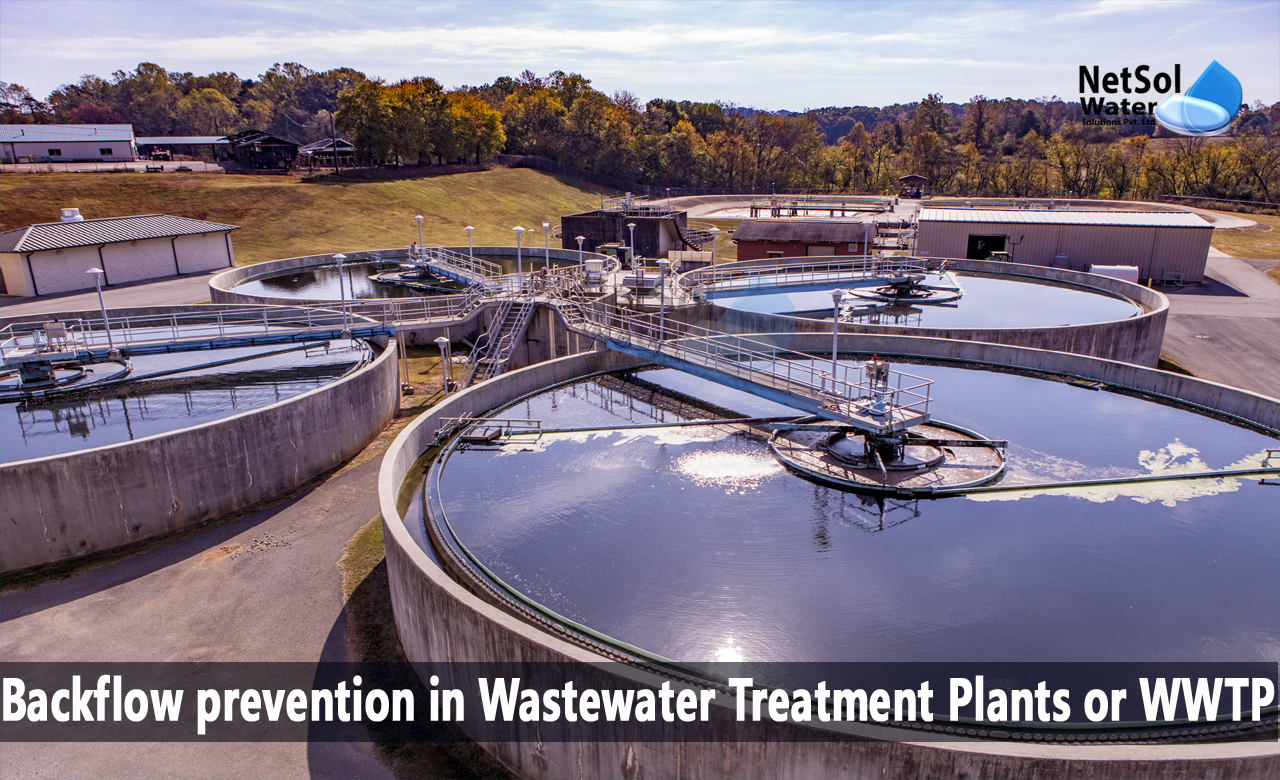Water supply systems must be kept separate from drainage, groundwater, storm sewers, and sanitary sewers. The drinking water supply could be contaminated if flows from any of these locations, enter a water main via siphon or backflow.
A backflow prevention device prevents this by isolating the water main, from potential contamination sources. Let us understand how backflow is prevented in wastewater treatment plants.
Sources of contamination
Cross connections can lead to the contamination of potable water supplies. These can happen both inside and outside the body. Cross connections can also occur within kitchen sinks and appliances such as dishwashers, clothes washers, and water heaters. Internal piping configurations that prevent backflow must be designed into these.
Groundwater, sewer lines, clogged drain lines, septic tanks, swimming pools, fish ponds, drinking troughs for farm animals, lawn sprinkler systems, water wells, and even buckets containing chemicals, if a connection (usually via a hose pipe) is provided, are all external sources of contamination.
When excessive precipitation causes the sewer to back up into adjacent basements, combined storm and sanitary sewers are especially vulnerable to backflow. Cross-contamination can occur in recycling tanks used to collect and reuse household greywater from rainfall, laundry, or showers.
What causes backflow prevention in WWTP?
Backflow is the flow of fluids (liquids or gases) in a piping system in the opposite direction, of their intended flow direction. Backflow pressure can be generated by a variety of devices, including boilers, power washers, heat exchange radiators, sprinkler systems, and pumps in general.
A break in the pipeline caused by shifting, excavation, vibratory equipment, vehicle loadings, failed valves, broken fixtures, or mechanical failures at a water supply pump station, is often the cause of a loss of pressure in a water main. Preventing the resulting backflow condition keeps contaminants, suspended solids, and dangerous chemicals out of the water supply.
Backflow prevention in WWTPs
Aside, from the air gap between the faucet and the sink, there are several mechanical pipe fixtures that prevent backflow. Barometric loops, double check valve assemblies, double check intermediate atmospheric vents, reduced pressure zones, and vacuum breaker assemblies, are examples of these. Their application is dependent on the situation and requirements.
1: The Barometric Loop is the most basic. This is simply a section of pipe that rises 35 feet above the service pipeline, before looping back down to connect to it. Despite its simple design and lack of the need for check valves, it cannot be used to prevent back pressure, and its excessive height makes it unsuitable for most applications.
2: The double check valve assembly is the most common type of backflow preventer (DCVA). It guards against both back pressure and back siphonage. This assembly consists of two single independently operating check valves, connected by four test cocks that are used to test the water tightness of each check valve.
This allows an operator to ensure that it is not fouled or otherwise malfunctioning. Each check valve is spring-loaded and operates closed, while under constant water pressure, allowing the gate to remain open.
3: A backflow preventer with a reduced pressure zone (RPZ) is a fixture made up of five independently operating valves. In the intermediate zone, there are two separate check valves. Between these two check valves is a differential relief valve, and two watertight valves are at the end.
4: A vacuum breaker (VB) is a device that combines a moveable disc with an atmospheric vent. Back siphon causes the pressure in the valve to drop below atmospheric, and the vent to open, admitting air and breaking the siphon. A VB is typically installed downstream of the system's last valve.
Conclusion
It is just as important to monitor and detect leaks and backflows as it is to prevent them. Netsol Water provides cutting-edge technologies, to help wastewater treatment plants avoid black flows.
If you have any questions about wastewater treatment plants, please contact the Netsol Water team right away. Our team is an expert in water treatment and can help you tailor a solution to your specific requirements.
We collaborate with our clients to design a customized wastewater treatment solution that meets your specific requirements, as well as an on-going service plan to completely maintain your system.
Netsol Water is Greater Noida-based leading water & wastewater treatment plant manufacturer. We are industry's most demanding company based on client review and work quality. We are known as best commercial RO plant manufacturers, industrial RO plant manufacturer, sewage treatment plant manufacturer, Water Softener Plant Manufacturers and effluent treatment plant manufacturers. Apart from this 24x7 customer support is our USP. Call on +91-9650608473, or write us at enquiry@netsolwater.com for any support, inquiry or product-purchase related query.



